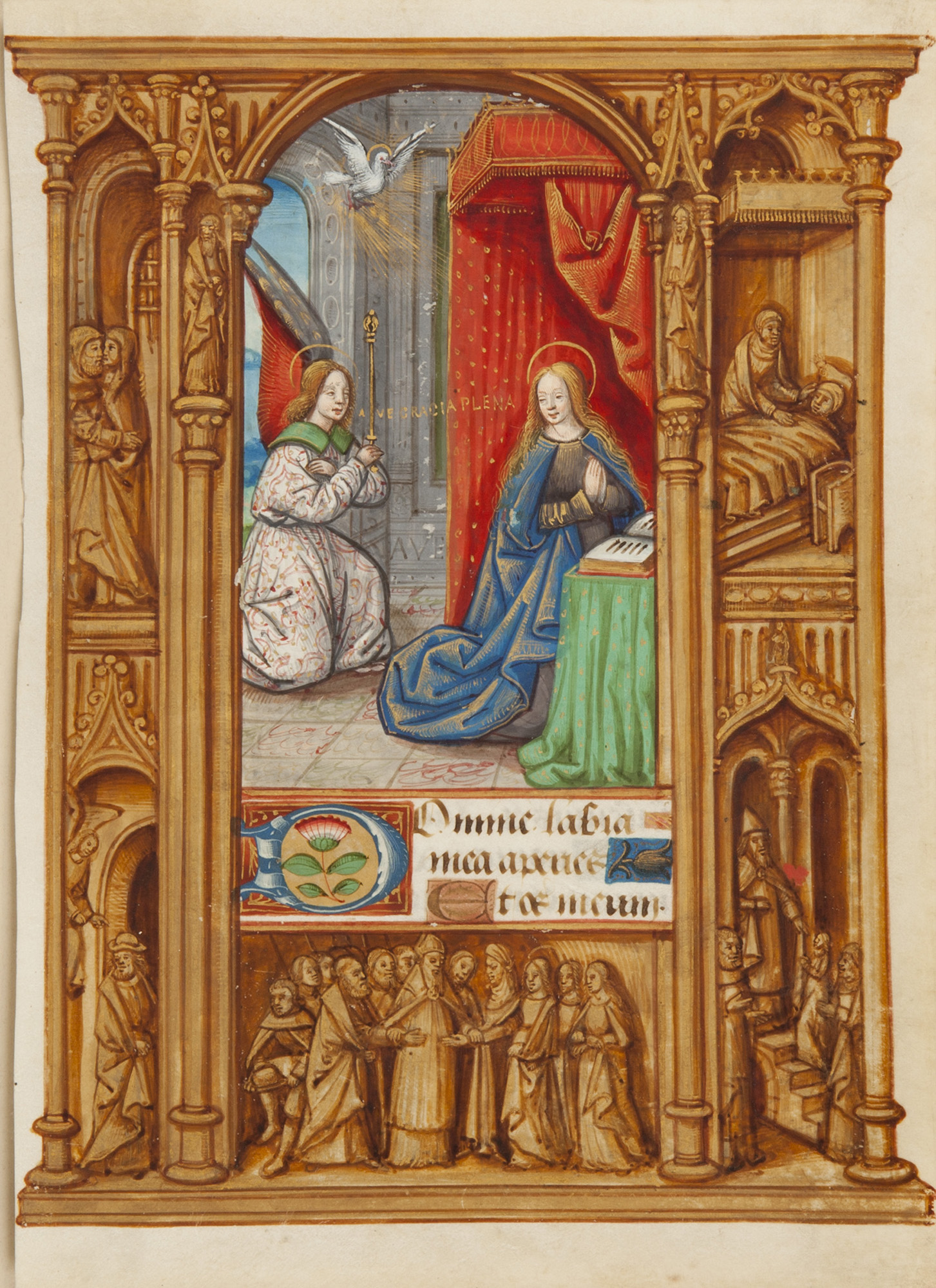January 16 – March 14, 2004

Artist Unknown, Annunciation, circa 1480. Pigment, gold on vellum. Collection of DePaul University, Religious Art Fund, Art Endowment Fund.
During the Middle Ages and Renaissance, some women learned to read and write in Latin, others attained a literate knowledge of vernacular languages such as French or German, and some women could not read or write at all. Despite the different levels of literacy, cloistered and secular women from the aristocracy to the middle classes not only actively participated in textual culture, but also made their own distinctive mark. Nuns consulted books daily as they sang from antiphonals or read from their Psalters. Secular women, emulating their cloistered sisters, recited their daily prayers from Books of Hours filled with emotional images of Christ’s Nativity and Passion.
Letters and legal documents attest to women’s active involvement in business transactions. Female authors and enterprising nuns at some convents participated in the spread of literate culture by composing and printing texts. Women’s involvement with written culture, however, encompasses more than just books and documents. An inscribed ring bearing a message of love and a ceramic plate with a woman’s motto illustrate the intimate relationship between women and the word in a variety of media.
From accounts of women’s spiritual experiences to orders of prayer, from images in books printed by nuns in a convent to books on the conduct of wives, the materials brought together here suggest the role of literacy in women’s lives in times of political turbulence and social change.